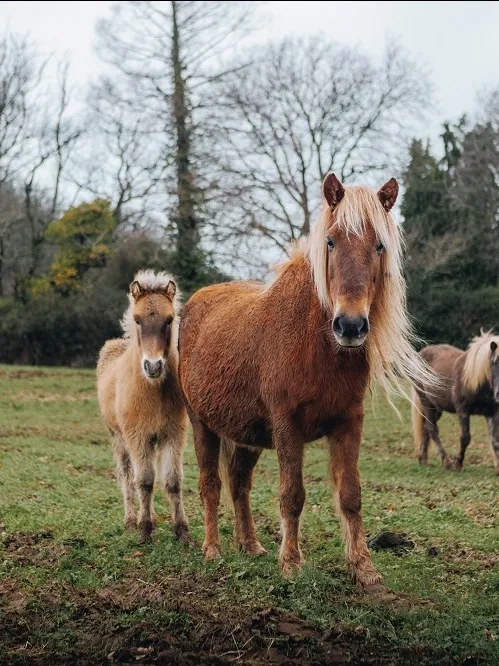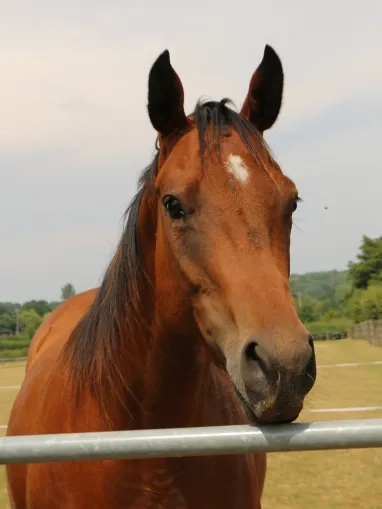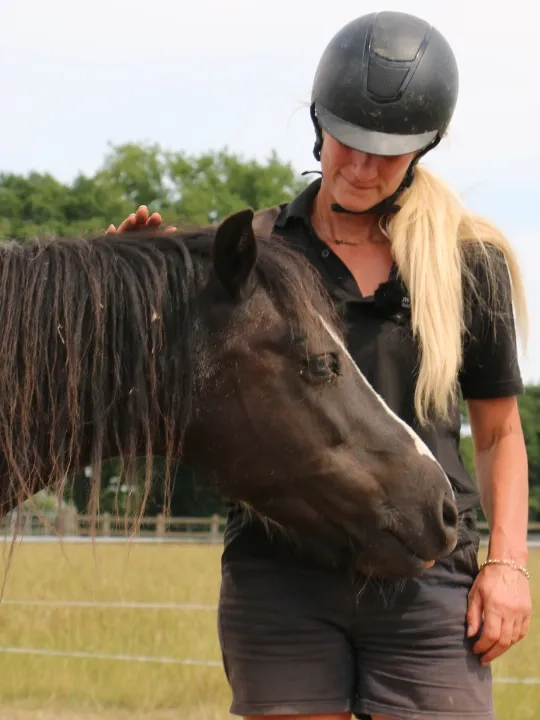22 January 2018

At the 2017 British Equine Veterinary Association (BEVA) Congress in Liverpool, which attracts veterinary professionals from all over the world, Sarah Hallsworth, Redwings’ Equine Behaviour Manager, gave an audience of veterinary nurses a fascinating introduction to the theory and practice of working with ‘difficult’ horses.
Discomfort, separation from companions, change of environment and unfamiliar handlers can all affect stress levels during veterinary intervention. Without consideration and management they increase the likelihood or severity of handling issues. Unwanted behaviours are not only a barrier to treatment, but present a real risk to human safety. BEVA have published staggering injury at work statistics that make an equine vet one of the highest-risk civilian career choices in the UK (BEVA, 2013).
Sarah recognised that using sedation as a chemical restraint in order to overcome behavioural problems in horses is a viable short-term solution to ‘get the job done’. But she was also keen to emphasise that horses cannot benefit from a positive experience while sedated, meaning there will be no reduction in fear or stress triggered by a similar situation in the future.
Physical restraint, such as twitching, should be avoided except in an emergency. It not only increases risk for both horse and handler, but has the potential to create long-term fear-associations in the horse that can escalate conflict behaviour in the long-term.
Sarah explained that Redwings’ vets and nurses use understanding of ethology, equine cognition and equine learning theory to help focus on the link between physical and psychological health, and give equal consideration to both. She then discussed some key principles of equine behaviour and how these improve our ability to modify that behaviour and reduce the need for restraint. Using positive reinforcement (reward) and negative reinforcement (release of pressure) can be highly effective in achieving intervention, reducing risk and helping horses to be less fearful of similar situations in the future.
“Horses are adept at making associations and have excellent long-term memories,” said Sarah. “So our goal should always be to create a positive learning-experience through reduced stress levels.”
Sarah used short film clips to illustrate the effect of environment on stress levels and demonstrate clicker training using positive reinforcement in relation to two common behavioural issues.
Bob is relaxed in a stable he is used to, but shows clear signs of anxiety when taken into an unfamiliar yard for the first time.
Sarah breaks the process of having an injection into small steps. By using the clicker to mark the correct behaviour and food to reward Moses, he becomes comfortable with one stage before moving on to the next.
Pyeman has developed aversion to leg-handling during treatment for a wound. Clicker training reduces Pyeman’s stress levels and enable him to be treated safely.
One of Sarah’s top tips is to ‘lose the label’. Using terms such as ‘naughty’, ‘stubborn’ and ‘rude’ stop us asking what is really motivating the horse to behave a certain way. “Many problem behaviours stem from pain, stress, confusion or fear,” said Sarah. “Labels are not only a barrier to looking into the root causes of behaviour, but they can be used to justify forceful or harmful strategies.”
Having rescued more than 1,000 abused, unhandled and semi-feral equines in the past 15 years, Redwings has unparalleled experience in addressing challenging behaviours that are a barrier to routine and emergency care. Finding the safest, kindest and most effective ways to interact with our horses is essential to safeguard the welfare of Redwings’ residents and the staff who care for them.
For more information on learning theory and horse handling training please look at the International Society for Equitation Science website
References: British Equine Veterinary Association (2016)

Redwings Press Office
Find out more about Redwings Press Office



